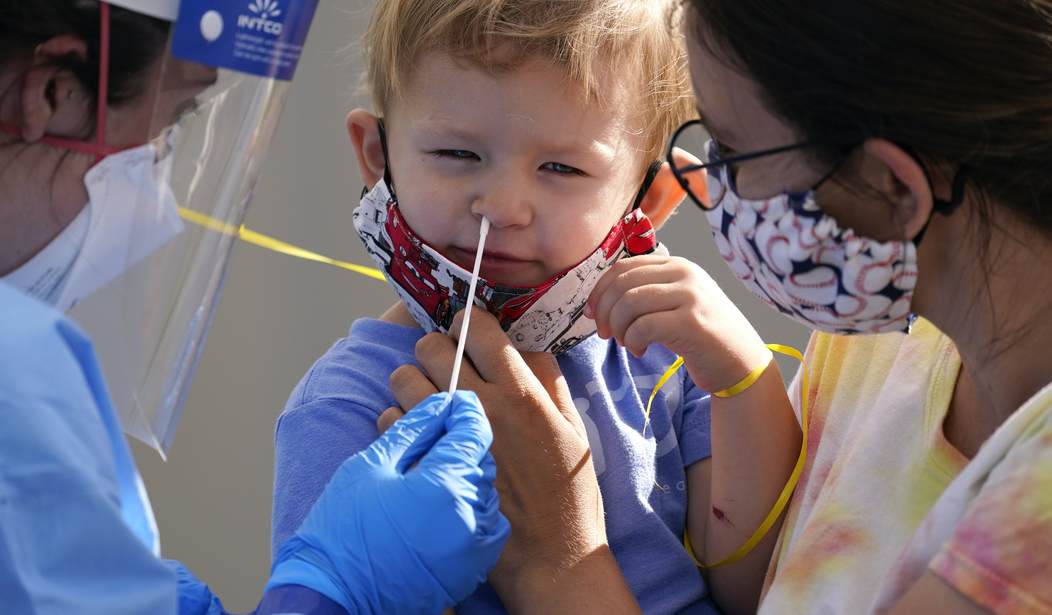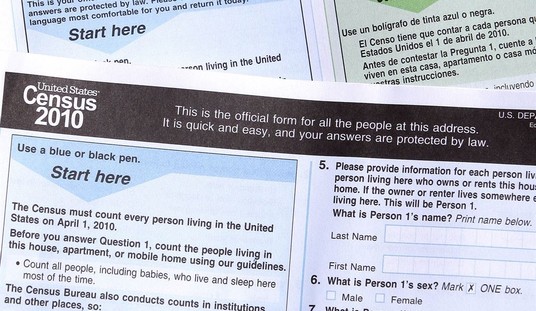Dr. Clifford Knopik, who holds a Ph.D. in Computer Science, a Masters in Information Systems, and earned a few more letters after his name, has some bad news for Americans – especially those living in Washington State: the COVID test results data that led to lockdowns are “garbage.”
“In May 2020, when it was becoming clear that the data’s garbage, we went back to living as normal as we possibly could,” he said. “My wife and I discussed that for the sake of our sanity … for our kids’ emotional sanity let’s just get back to normal. It’s not worth it.”
Knopik began prying information out of the Washington State Department of Health (DOH) to find out what the numbers revealed.
Related: IT’S HAPPENING: Biden Is Sending Community Organizers Door-to-Door With COVID Shots
The more he discovered about the test result data the angrier he became. “The more I dig, the more upset I get,” he said. “It’s troubling that there’s people out there that aren’t as lucky as I am with my family.”
“Never in my professional career [have I seen] this level of vagueness and corrupted data,” Knopik added. “It wouldn’t be stood for in private business or in a doctoral study. This is just amazing to me. The level of impactful decisions made on just garbage data – that’s what I’m calling it, garbage data – I’ve never seen anything like this.”
Knopik told Seattle radio host Todd Herman (full disclosure: this writer fills in for Todd on KTTH radio) that he’s now confirmed that the COVID testing data are useless and yet have been used to lock down the state.
Knopik talked to DOH officials and discovered that the state uses three different polymerase chain reaction (PCR) tests to determine if someone has COVID. He was given data on two of the tests and found that the cycle threshold (Ct) on one was 37 and the other was 39.
This PCR cycle threshold and its sensitivity has been troubling from the start.
Just the News explained in December of 2020 that these cycle rates on PCR tests are problematic at the very least.
At the center of the debate is the “cycle threshold” at which a PCR test operates. PCR tests work by multiplying a virus fragment over a series of cycles until it can reliably detect and confirm the virus within a sample. The more cycles a test must go through before it detects the virus, the smaller and weaker the original sample was.
High cycles, in other words, are expected to correlate to weaker viral samples, indicating that a positive case in that context may have a significantly different meaning in epidemiological or virological terms than would a lower cycle threshold positive.
If the cycle rate is too high, the test picks up other hings – such as viral debris– and is read as a positive test result for COVID, thus inflating the “positive” case numbers.
“That’s the concern that experts in this field have had all along is that they’re triggering false positives across the board when they’re running it that high,” Knopik told Herman on his radio program.
And, as PJ Media colleague Stacey Lennox reported a year ago, in July of 2020, none other than the director of the National Institute of Allergy and Infectious Diseases, Dr. Anthony Fauci, himself said in an interview that anything over a 35 cycle rate was bogus.
“What is now sort of evolving into a bit of a standard,” Fauci said, is that “if you get a cycle threshold of 35 or more … the chances of it being replication-[competent] are minuscule.”
“It’s very frustrating for the patients as well as for the physicians,” he continued, when “somebody comes in, and they repeat their PCR, and it’s like [a] 37 cycle threshold, but you almost never can culture virus from a 37 threshold cycle.”
So, I think if somebody does come in with 37, 38, even 36, you got to say, you know, it’s just dead nucleotides, period.”
And Dr. Knopik says Washington’s are 37 and 39, respectively. “That’s the concern that experts in this field have had all along is that they’re triggering false positives across the board when they’re running it that high.”
That’s bad enough, but it gets even worse.
Knopik says that the DOH has no “visibility” on the Ct rates that independent labs around the state are using. DOH never asked and there’s no record. They don’t know. “I’m very, very shocked they have no visibility,” he said. “They have no idea what cycle thresholds they’re using.”
On the day Joe Biden was sworn into office, the World Health Organization (WHO) posted newer guidance on its website about using PCR tests at too sensitive a Ct rate:
WHO guidance Diagnostic testing for SARS-CoV-2 states that careful interpretation of weak positive results is needed (1). The cycle threshold (Ct) needed to detect virus is inversely proportional to the patient’s viral load. Where test results do not correspond with the clinical presentation, a new specimen should be taken and retested using the same or different NAT technology.
WHO reminds IVD users that disease prevalence alters the predictive value of test results; as disease prevalence decreases, the risk of false positive increases (2). This means that the probability that a person who has a positive result (SARS-CoV-2 detected) is truly infected with SARS-CoV-2 decreases as prevalence decreases, irrespective of the claimed specificity.
Knopik told Herman that the new guidance would naturally result in fewer “positive” cases. “That would definitely affect the numbers,” he explained. “If you lower the threshold you would get less cases – quote-unquote ‘cases.’ What they actually replied with is that they’re not tracking cycle thresholds at all. That’s even more shocking to me. They’re not tracking whatsoever the cycle thresholds.”
But requests for information that Knopik sent in January and February of 2021 showed that Washington State – and likely other states as well – continued apace using tests with high Ct rates, thus creating more false positive “cases,” which were used to keep lockdowns and emergency orders in place.
Recommended: Whitmer Kidnap Plot Defendant Demands Info on the DOZEN FBI Informants and Paid ‘Snitches’ Involved
There’s no way to go back and figure out how these positive cases were determined. Knopik told Herman:
Some people who are truly infectious will be triggering at 25 or something. But if you’re not tracking that you don’t know what percentage of any of the totals in the past were.
I’ll just pick a random date. On May 28, 2021 [there were] 530 confirmed cases on their dashboard. How many of those cases were triggered at 40?
How many of those cases were triggered at 25 or anywhere in between? It’s impossible to know. We don’t know if they’re at 40 or 25.
It’s likely that Washington officials were just happy to have enough tests in their arsenal to check people for COVID.
The catastrophe is that they never kept track of how they arrived at these “cases,” whose numbers were used to lock down people’s lives, destroy businesses, cause suicides, put millions on the government dole, and destroy the better part of two years of schooling.
And they can never do a regression analysis to re-check their assumptions and results.
Right now, the data is historically so bad that there’s no way we’ll ever be able to go backwards and figure out anything because they didn’t track anything except for a check box saying that something got triggered. That’s it.
There’s no meaningful additional data to try to analyze what that positive trigger means. Was it because it was too high? Was it because it was truly an infection?
It’s impossible to know. It would be impossible at that time to even know.
COVID can be a serious illness, especially for older and more health-compromised people. Misstating the case numbers, either by accident or malevolence, isn’t necessary to drive home its seriousness in the American conscience.
But here we are.
As Knopik told Herman, state DOH number-crunchers “should be fired. They should never do data analysis ever again. Stay away from data.”









Join the conversation as a VIP Member